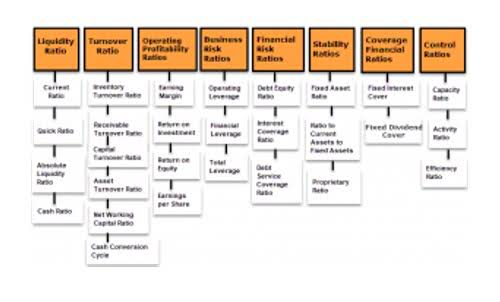What Is the Common Equity Formula and How Is It Calculated?

Additionally, mutual funds are obligated to distribute the accumulated realized capital gains to the shareholders. Assume that the fund has $100 million worth of investments in different securities (a figure calculated from the day’s closing prices for each security). NAV per individual share is often close to or equal to the book value per share of a business. Companies considered to have high growth prospects are traditionally valued more than NAV might suggest. For closed-end funds, per-share NAV is frequently compared to the stock price (market value per share) to find undervalued or overvalued investments.
What are the steps of calculating equity?
- If the investor can obtain a slightly lower IRR from a project that is considerably less risky or time-consuming, then they might happily accept that lower-IRR project.
- Investors can compare a company’s D/E ratio with the average for its industry and those of its competitors to gain a sense of a company’s reliance on debt.
- If, however, you believe the differences between effective and marginal taxes will endure, use the lower tax rate.
- These earnings fund growth initiatives like research and development or acquisitions without requiring external capital.
- If you take a job that includes equity compensation, then you’ll be receiving shares as part of your total compensation package.
The cost of debt and a company’s ability to service it can vary with market conditions. Borrowing that seemed prudent at first can prove unprofitable later as a result. Equity is a common financial term used in business operations, investing and more. This balance can be used to determine the profitability of a company or to determine an investor’s stake of ownership. In finance, equity is the market value of the assets owned by shareholders after all debts have been paid off.
What Does a Negative D/E Ratio Signal?

Often when someone says equity, they mean either owner’s equity/ shareholder’s equity. The Equity Value is the total value of a company’s stock issuances attributable to only common shareholders, as of the latest market close. The Market Capitalization of publicly traded common stock can be construed as the company’s worth based on its market standing or its demand among investors. This formula is known as the investor’s equation where you have to compute the share capital and then ascertain the retained earnings of the business. This value represents XYZ’s average cost to attract investors and the return that they’re going to expect, given the company’s financial strength and risk compared with other investment opportunities.
Example of the D/E Ratio

Generally speaking, the higher an internal rate of return, the bookkeeping more desirable an investment is to undertake. IRR is uniform for investments of varying types and, as such, can be used to rank multiple prospective investments or projects on a relatively even basis. In general, when comparing investment options with other similar characteristics, the investment with the highest IRR probably would be considered the best. The problem with historical beta is that the correlation between the company’s stock and the overall stock market ends up being pretty weak.
#2 – Stockholder’s Equity
This happens when a homeowner owes more on their mortgage than the value of their home. While frequently used in business operations, equity is a term that pops up in other places too. Therefore, the total equity of ABC Limited as of March 31, 20XX is $300,000. We expect to offer our courses in additional languages in the future but, at this time, HBS Online can only be provided in English. This forward-looking approach sets market leaders apart, allowing them to strengthen their position and reshape their industries through growth.


That’s because the cost of debt we’re seeking is the rate a company can borrow at over the forecast period. That rate may be different than the rate the company currently pays for existing debt. Regardless of whether you use the current capital structure mix or a different once, capital structure should remain the same throughout the forecast period. Otherwise, you will need to re-calibrate a host of other inputs in the WACC estimate. The Weighted Average Cost of Capital (WACC) is one of the key inputs in discounted cash flow (DCF) analysis, and is frequently the topic of technical investment total equity formula banking interviews. Equity is the net worth of a company or its ownership stake, which may or may not be available for trade over the stock exchanges.
- The weighted average cost of capital (WACC) is a critical assumption in valuation analyses.
- The most common use of equity value is to calculate the Price Earnings Ratio.
- Large dividend payments combined with financial losses in the successive periods will also show a negative balance of the shareholders’ equity.
- Retained earnings are part of shareholder equity and represent net income that is not paid to shareholders as dividends.
- This gives the outcome of the book value of the company which is the company’s total net asset value and is roughly equal to the equity value.
How to Calculate IRR in Excel
- Rather, they will likely pursue projects with the highest difference between IRR and RRR, as these will likely be the most profitable.
- WACC is used as the discount rate when performing a valuation using the unlevered free cash flow (UFCF) approach.
- As per the formula above, you’ll need to find the total assets and total liabilities to determine the value of a company’s equity.
- The cost of capital is the total cost of raising capital, taking into account both the cost of equity and the cost of debt.
- The theory suggests that the cost of equity is based on the stock’s volatility and level of risk compared to the general market.
- On the other hand, NAV reflects the total value of a mutual fund after subtracting its liabilities from its assets.
- To fully grasp the calculation of common equity, it is essential to understand its components.
Companies in some industries such as utilities, consumer staples, and banking typically have relatively high D/E ratios. Gearing ratios focus more heavily on the concept of leverage than other ratios used in accounting or investment analysis. The underlying principle generally assumes that some leverage is good but too much places an law firm chart of accounts organization at risk.
- The balance sheet value of common stock is calculated by multiplying the par value by the number of shares issued.
- A firm typically can raise capital by issuing debt (in the form of a loan or via bonds) or equity (by selling stock).
- Debt and debt equivalents, non-controlling interest, and preferred stock are subtracted as these items represent the share of other shareholders.
- Debt can enable the company to grow and generate additional income but potential investors will want to investigate further if a company has grown increasingly reliant on debt or inordinately so for its industry.
- From our illustrative exercise, it should be easy to understand how higher perceived risk correlates to a higher required return (and vice versa).
- Since the CAPM essentially ignores any company-specific risk, the calculation for the cost of equity is simply tied to the company’s sensitivity to the market.
Limitations of the D/E Ratio
Like any metric used to assess the financial strength of a business, there are limitations to using the weighted average cost of capital. Determining cost of debt (Rd in the formula), on the other hand, is a more straightforward process. This is often done by averaging the yield to maturity for a company’s outstanding debts. This method is easier if you’re looking at a publicly traded company that has to report its debt obligations. A relatively high D/E ratio is commonplace in the banking and financial services sector. Banks carry higher amounts of debt because they own substantial fixed assets in the form of branch networks.
Leave a Reply